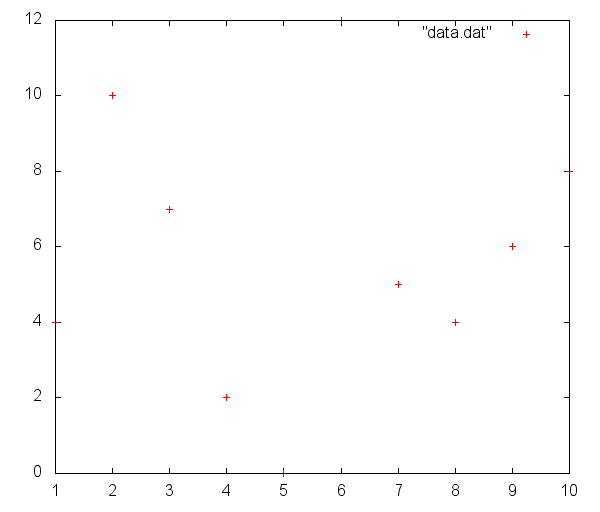

Splot u* sin( v), u* cos( v), bessel( u, t) w pm3d ls 1 Outfile = sprintf('animation/bessel%03.0f.png',50* t)
GNUPLOT FOR LOOP CODE
With the file t containing the code to execute within the loop

This technique was used, for example, for the gif animation entry. Until 4.6 an iteration over different lines of code was only possible with the help of an extra file. Here we start with, in my opinion, the nicest new feature: block-structured conditions and loops. There are a lot of interesting changes in this new version and we will cover the bigger ones within the next posts. Since last month the new Gnuplot version 4.6 is officially available. Tags: data, filledcurves, for, index, labels, multiplot, stats, string 2 – you should adjust the xrange and yrange values accordingly. If you want to plot a subset of states – as in Fig. The plotting of the state names is easily achieved by the labels plotting style:Īt the end we provide the list with the index numbers and the corresponding states. ( code to produce this figure, USA data, election data) 2 Names and election results of single U.S. This allows us to put them in the map as well, as you can see in Fig. The data file with the election results includes also the names of the single states and a coordinates to place them. Plot for 'usa.txt' i idx u 2:1 w filledcurves ls ELEC,\Īlaska and Hawaii are then added with additional plot commands and the help of multiplot. ELEC will return the election result for the state with the index 0. In a second step we plot the state borders and color the states with the help of the ELECstring. Stats 'election.txt' u 1:(ELEC = ELEC.sprintf('%i',$2)) During the parsing of every line the election result stored in the second column will be added at the end of the ELEC variable. The stats command is suitable for this, because it parses all the data but doesn’t try to plot any of them. 2.įor drawing a single state in red or blue we first collect the results for every single state in the string variable ELEC. With the help of these two data sets we are able to create Fig.

The election result can be 1 or 2 – corresponding to blue and red. In addition to the state border data we have another file that includes results from an example election and strings with the names of the states. At the end of this post the corresponding index numbers for every state are listed. This allows us to plot a single state with the help of the index command. Two double lines divide the single states. In the following the same plot is repeated, but only with black lines and different angle resolutions which also have a big influence on the final appearance of the plot.įig. The column command gives us the corresponding column the data is stored in the data file, amplitude_scaling modifies the amplitude of the single responses, and +angle shifts the data of the single responses along the y-axis to achieve the waterfall.Įven though the changing color in the waterfall plot looks nice you should always think if it really adds some additional information to the plot. To achieve the waterfall plot, we start with the largest angle of 360° and loop through all angles until we reach 0°. U 1:(amplitude_scaling*column(limit360(angle)+1)+angle):(color(angle)) \ Plot for 'head_related_impulse_responses.txt' \ In the plotting command the palette is enabled with the lc palette command, that tells gnuplot to use the palette as line color depending on the value of the third column, which is given by color(angle). The palette is defined in an extra file and loaded, this enables easy reuse of defined palettes. The color is added by applying the Moreland color palette, which we discussed earlier. At 0° the source was placed at the same side of the head as the receiver. Here, we show the responses for all incident angles of the sound at once. They describe the transmission of sound from a source to a receiver placed in the ear canal dependent on the position of the source.

1 the same head related impulse responses we animated already are displayed in a slightly different way. ( code to produce this figure, color palette, data) 1 Waterfall plot of head related impulse responses.


 0 kommentar(er)
0 kommentar(er)
